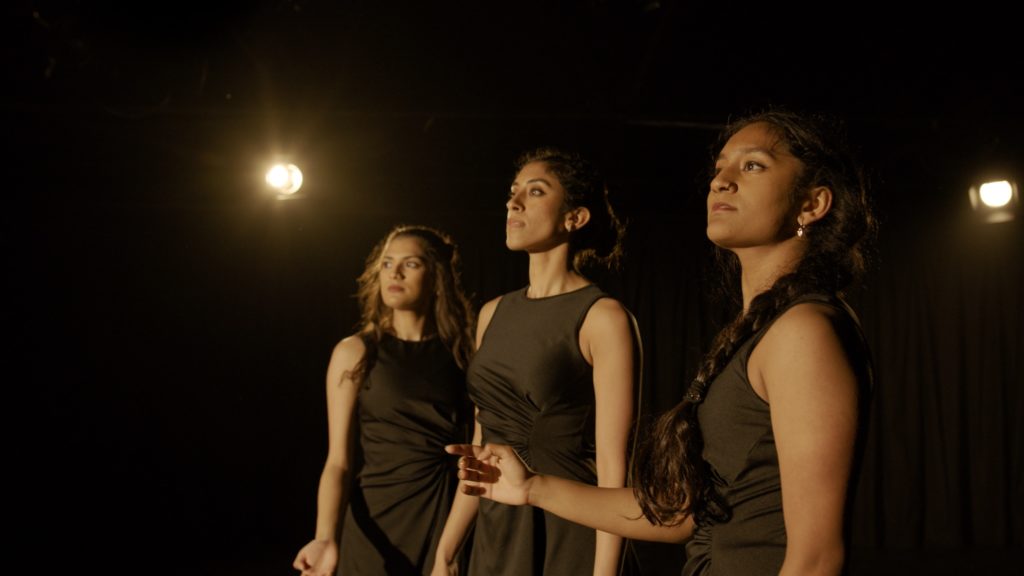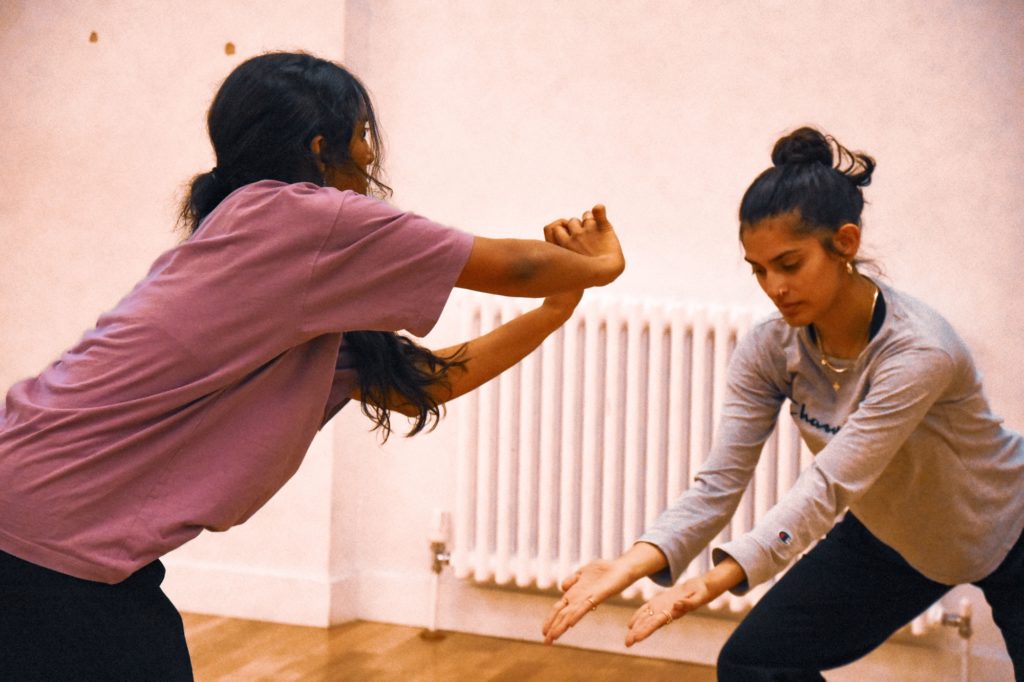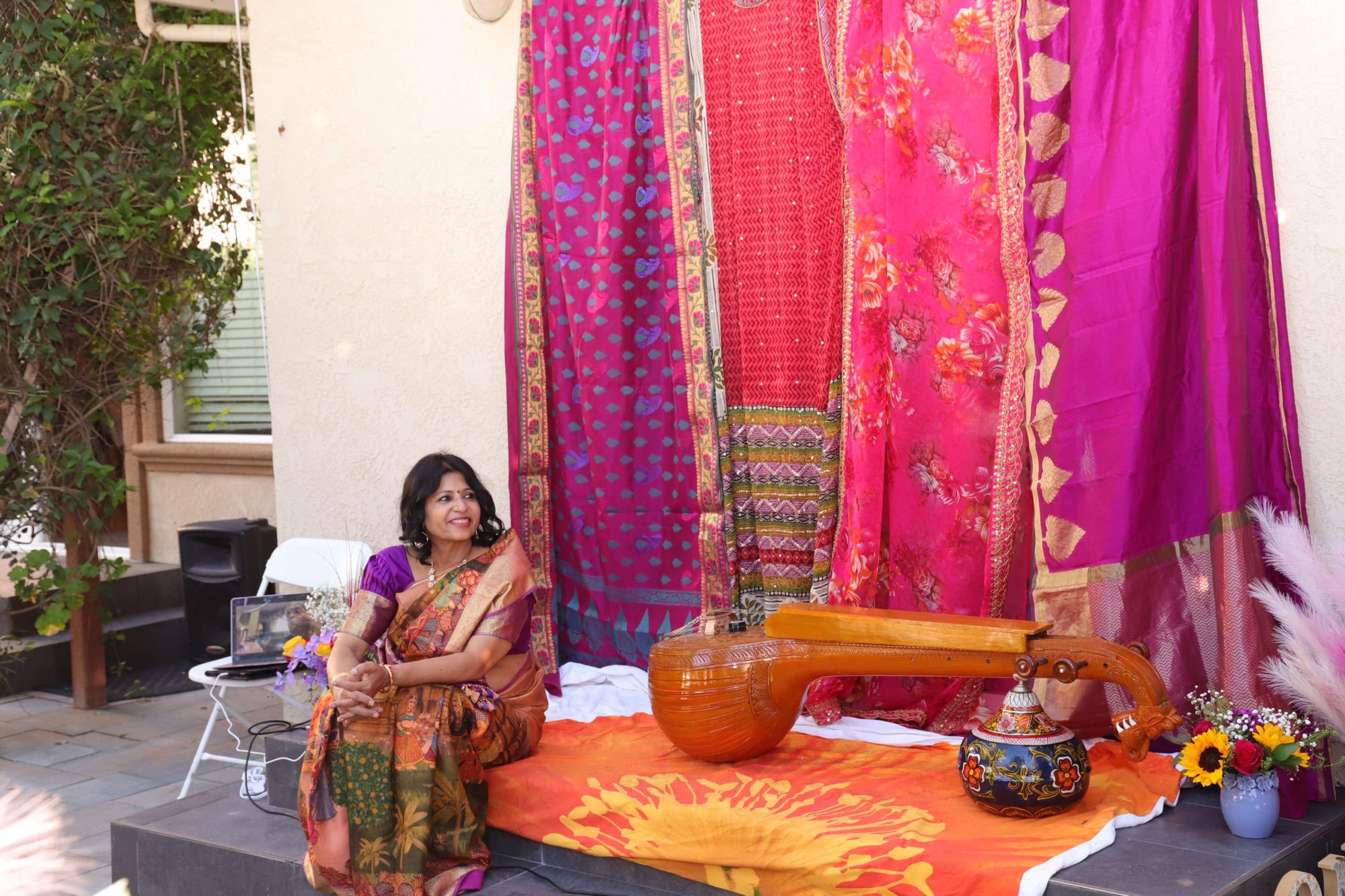Words by Katie Hagan.
One thing that never fails to fascinate me is the body’s ability to hold onto things and remember what is sacred to you, even if during your everyday reality it couldn’t be further from your memory. I’m not sure if it’s muscle memory – where, through repetition, the brain creates stronger neural pathways and connections that control the associated muscle groups – or something more mystical or inexplicable. But as someone who has recently rediscovered jazz dance after not doing it for 10 years, this rekindling of sorts is something I’m sitting with a lot right now.
When an email dropped into our inbox from dance artist and anthropologist Anjana Bala about her mother Booni’s recent rekindling of her musical talents on the classical Indian instrument, the veena, I jumped at the chance to find out more.
“The veena is India’s national instrument,” Booni tells me over Zoom. “It has many uses including being a classical instrument for Bharatanatyam dancers. It is a main string instrument meaning that it is the central focus, it commands your attention. There’s lots of possibilities with the veena – you can play Carnatic melodies or more Western songs.”
Booni is 60 years old and has been working as an engineer for many years. Booni moved to the USA in the 80s from India and has raised two “incredible children with my husband Bala.” Anjana, joining us on Zoom too, is based here in the UK. She works across Bharatanatyam and contemporary practices, and her research in anthropology looks at the experiences of mental health in India.
“I started to play the veena when I was 12 years old, only getting trained for 1 year in my rural town of Aangari in India. My grandmother also used to play,” Booni reflects wistfully. “We used to move around every three years to various rural towns in South India. I always brought my veena with me, though I never used to play much. I brought it to the USA as a reminder of my childhood and tradition, but I never touched it for 45 years. Because of settling into a new country, work, children, I had to put away this passion. For many years, my family didn’t even know I could play.”
Booni explains to me that it was a trip to the UK last year that reignited her flame. “We were watching veena virtuoso Abi Sampa in concert and something just went inside me. Something triggered in my mind that said, ‘What am I doing??’”
Returning to the USA after Abi Sampa’s concert, Booni decided to order a new veena from India and find a teacher. “Most teachers said I was too old to restart. I finally found a teacher after 3 months of searching. I took online classes with him. I had to go back to basics but I pretty much invested every day into playing. It then gradually started to come back. Everything was stored somewhere in my body. Challenging though at times, it was a miracle.”
“Our temple had an event and I worked with a singer to play the opening song on my veena. It was such a special moment. After 45 years of not playing, it was a very cathartic experience. I now feel like I can play whatever I hear, I feel close to my veena. The people who knew me in the temple for three decades had no idea I could play. It was a very humbling experience to relearn and continue to pursue my passion.”

Recordings of Booni playing the veena feature in Anjana’s new film Optics, arranged by composer Nicole Robson commissioned by Moving Online, a project based at Coventry University’s Centre for Dance Research, Optics premieres on Sadler’s Wells Digital Stage. “I have been interested in this idea of optics for a long time,” says Anjana, “which is about how things appear (rather than are), social illusions, and our complex relationship to being seen. The fact that the film is premiering on Sadler’s Wells Digital Stage then contributes to my own optical illusion,” says Anjana, “because people may perceive me as having more social worth, or some sort of social capital, because I’ve got an association with this institution. When, in reality, the process was really a series of lucky conversations and open calls rather than merit or talent based exclusively.”
Set against shifting landscapes of light and the edges of visibility, Optics “explores our complex relationship to light: between striving for it and resisting it, between perfection and imperfection, between embracing dreams for external recognition and one’s own light.” Following three bodies – Anjana, Adhya Shastry and Aishani Ghosh – the dance film unravels what happens when light (optics) brings us together and pulls us apart.
A self-produced dance film with 10 brilliant collaborators, the production has been a real learning experience for Anjana. But how did the veena come into the film?
“It’s a great question!” says Anjana. “Part of it was seeing my mom’s journey in rediscovering her passion over the past year. I would call her, and she would be awake at 5am practicing everyday before her work day started. This really inspired me.”

For Anjana, it was a lucid reminder that everyone can be an artist. “What does it mean for me to pursue the arts because I have grown up in a context that validates being an artist as a legitimate form of existing?” Anjana highlights. “But Mom’s circumstances are different. Her context did not really give her that same kind of validation. So I guess the collaboration is an honouring of that and in some ways showing that whoever I am as an artist, I have been directly influenced by my lineage. Now when I watch the film, I feel like my mom is on stage with me – a kind of creative kinship.”
“I hope that this collaboration can spark others to look at what they’re capable of and how they can make it happen,” says Booni. “No matter who you are, you can be an artist and contribute positively to someone else’s work or journey. You can find your creative spark at any time of your life and recognise your own light. Whether it comes to you for the first time, or it comes to you again, it’s truly magical.”
Header image of Booni by Somasekhar YK. Watch Optics on Sadler’s Wells Digital Stage.
Anjana recommends watching the Audio-Description version, scripted by her dear friend and collaborator Shivaangee Agrawal, not only for its commitment to accessibility, but also its added poetics.
